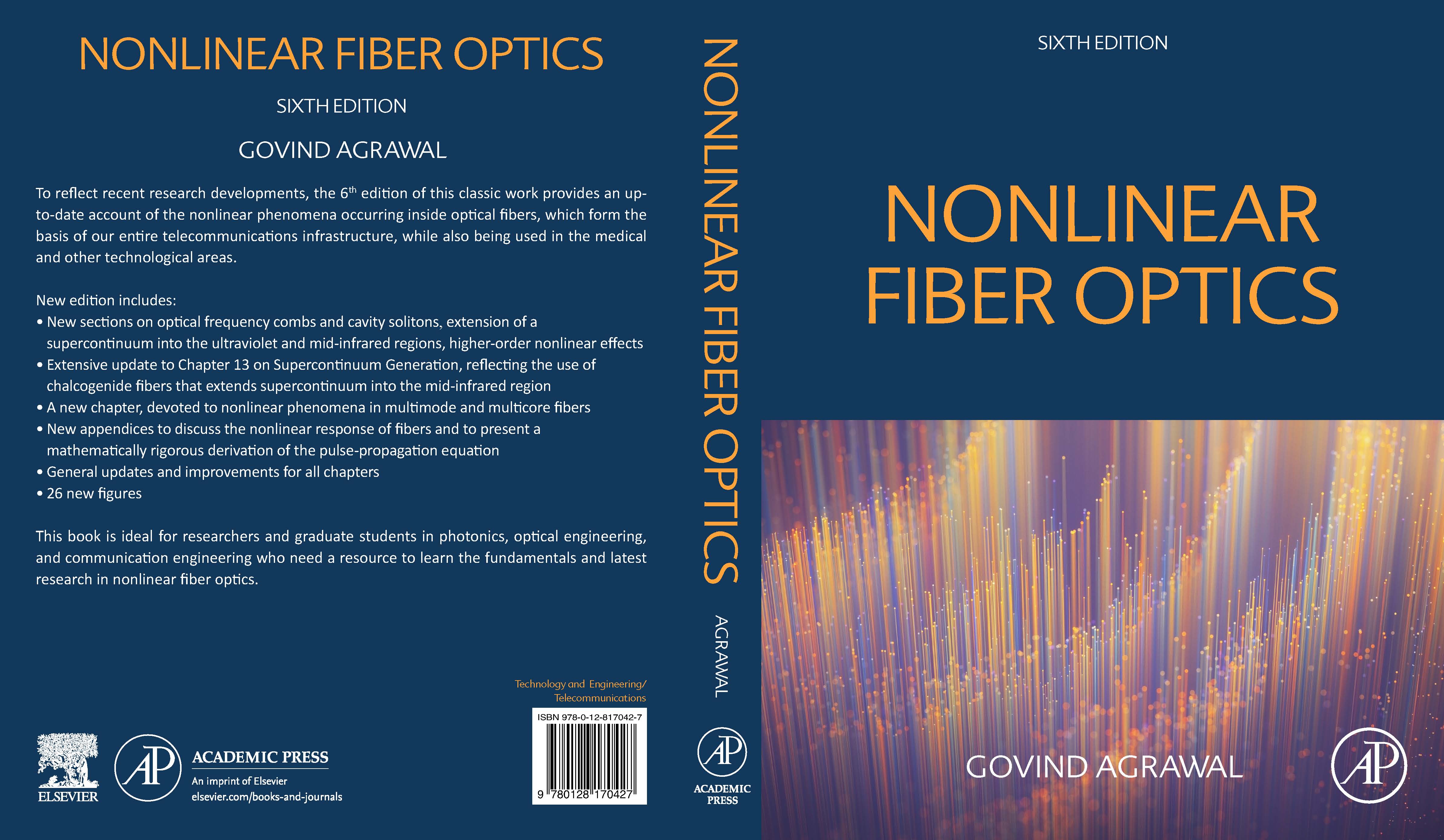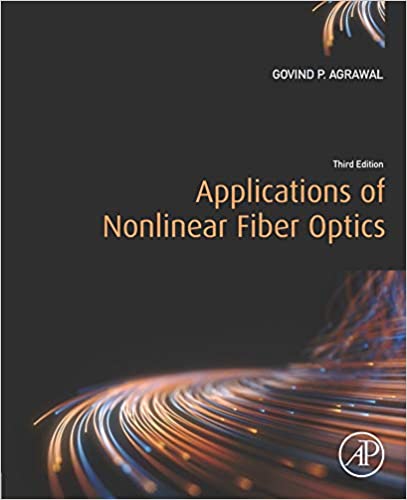Nonlinear Effects in Optical Fibers
Nonlinear effects in optical fibers originate from the intensity dependence of the refractive index and stimulated inelastic scattering. Our group works on different aspects of the fiber nonlinear effects known as self-phase modulation, cross-phase modulation, four-wave mixing, stimulated Raman scattering, and stimulated Brillouin scattering.

Conventional optical fibers require long lengths before nonlinear effects can be observed because of a relatively weak nonlinearity of silica glasses. In recent years, several new kinds of fibers, known as highly nonlinear fibers have been developed. Typically, the core diameter in such fibers is reduced to near 1 μm (from 10 μm or so) to enhance the effective nonlinearity of silica fibers. In another approach, other glass materials (such as lead silicates, chalcogenides, and bismuth oxide) are used in place of silica to make optical fibers. Such modifications allows one to observe the nonlinear effects with lengths as short as a few centimeters.
Supercontinuum generation
Highly nonlinear fibers exhibit unique dispersion properties because of a tight mode confinement. The combination of their unusual dispersive properties and high nonlinearities has proved valuable and has provided a new platform for investigating different aspects related to linear, nonlinear and ultrafast fiber optics. For example, when a relatively wide intense optical pulse (width 100 ps or more) is launched close to the zero-dispersion wavelength of the fiber, the combination of modulation instability, stimulated Raman scattering, and four-wave mixing creates enough new frequencies within the pulse spectrum that it can span a wide range. Such a spectrum is called the supercontinuum, and it can also be created by launching an intense continuous-wave beam in to a suitable fiber.
Even more interesting effects are observed when an ultrashort pulse (width 100 fs or less) propagates in the anomalous-dispersion regime of a highly nonlinear fiber. In this case, fiber dispersion, self-phase modulation, and stimulated Raman scattering interact with each other so dramatically and in such a complicated fashion that the supercontinuum is initiated through a process known as soliton fission and developed further through two novel phenomena known as Cheronkov or dispersive radiation and Raman-induced spectral shifts. Our group discovered in 2004 that the supercontinuum generation process is very sensitive to the input polarization state of the optical filed, and one must consider the vector nature of soliton fission. More recent work has focused on frequency-comb generation through dual pumping using CW lasers and on the use of tapered fibers. Applications of Nonlinear Fiber Optics are discussed in the book whose cover is shown here.

For a list of recent publications, visit the link: publications.
